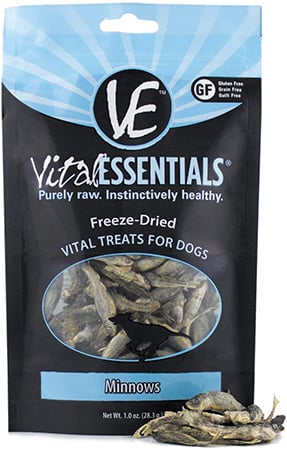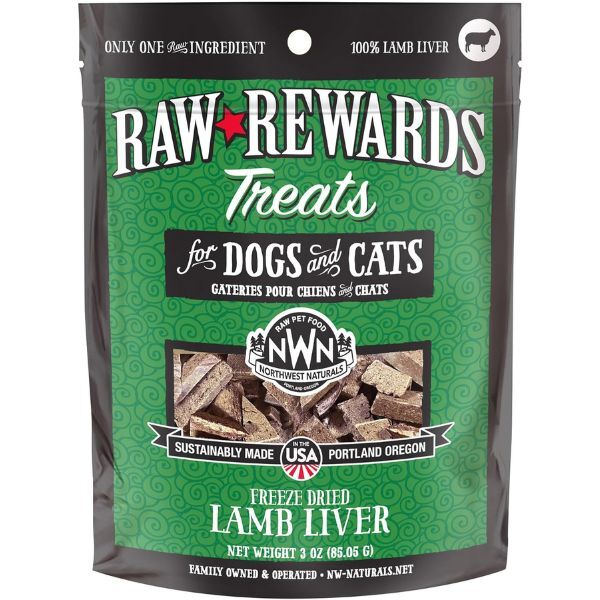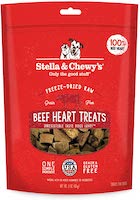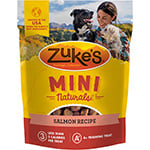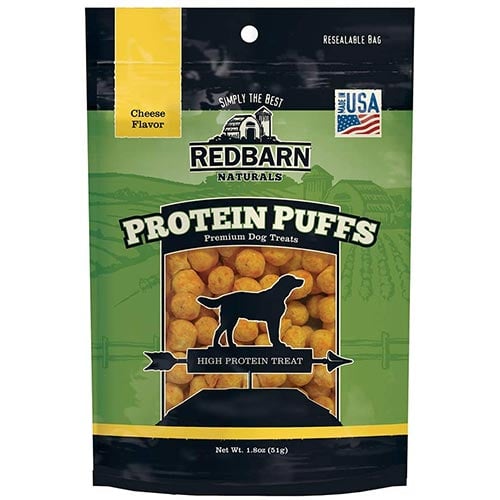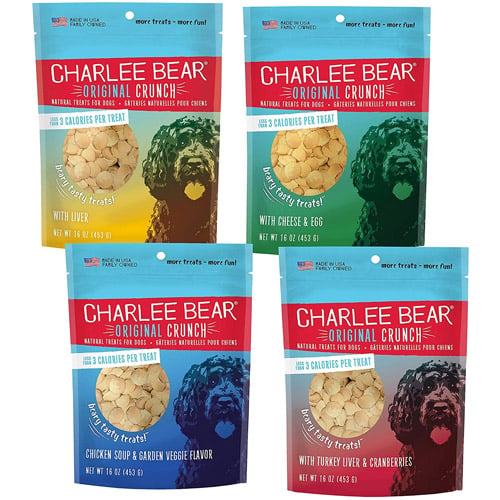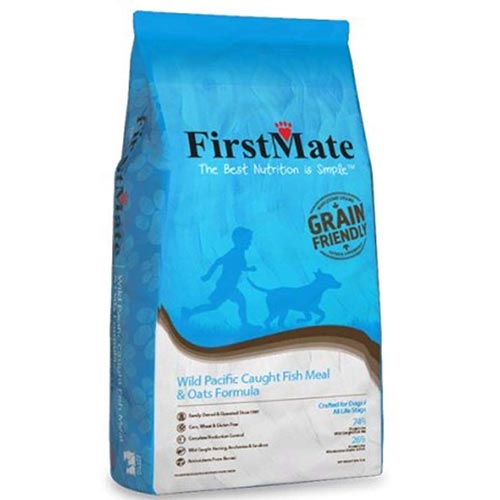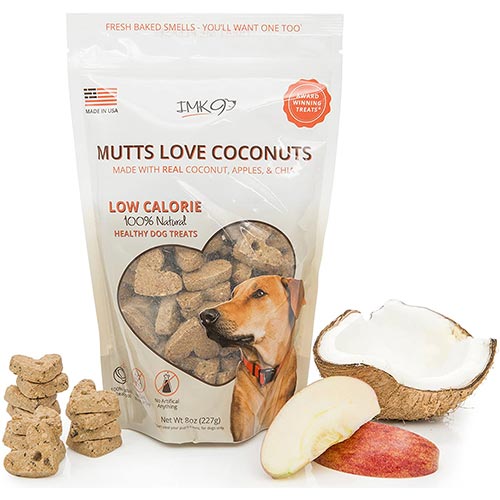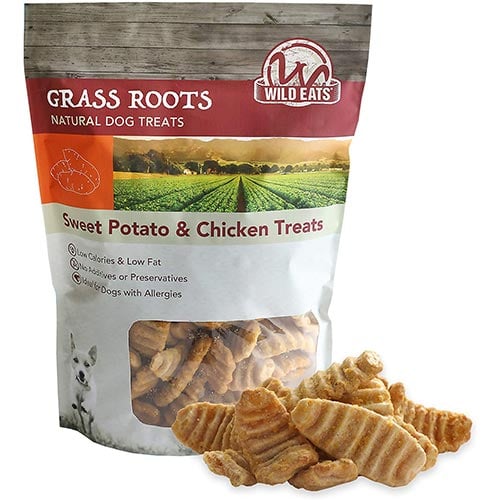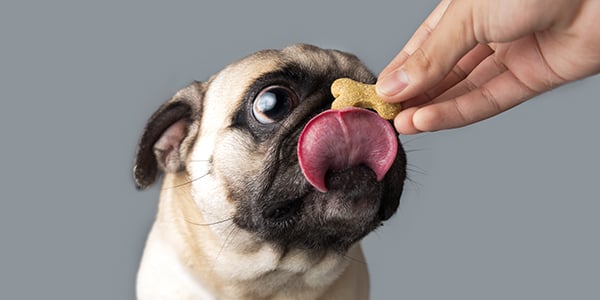 The kind of dog treat you use when training your dog can make a big difference in how successful your training sessions are.
The kind of dog treat you use when training your dog can make a big difference in how successful your training sessions are.
The right dog training treat can help a dog focus more easily around distractions. And in some cases, a treat might be so distracting in and of itself that a dog can't focus on the task at hand!
Many of my dog training clients are always asking me what kind of treat they should use with their dogs. With so many options available, it can be hard to know what dog treats you should buy.
There is a simple answer to this question. Use whatever training treat your dog enjoys! However, knowing how to "grade" your dog's treats and keeping them varied will benefit you in a few ways:
-
You'll be able to train new behaviors faster
-
You'll be able to fade out the use of food treats in training more effectively
-
Your dog will be more focused on you (and responsive to you) around distractions
-
Your dog won't get tired of the "same-old" treat
-
You can better manage your dog's treat calorie intake
Read on for tips to figure out what training treats your dog likes best and when to use different treats to bolster your dog's training.
How to Figure Out What Treats Your Dog Likes
You might hear your dog trainer talk about using "high value" vs. "low value" training treats — this is referring to the value your dog places in each food reward, not the price you pay for the treats at the store. You'll want to figure out what treats your dog finds more valuable than others.
While there are some basic assumptions we make regarding what treats dogs hold in higher esteem, there always seems to be exceptions to the rule. One training client of mine had a dog who much preferred dry and bland treats over smelly freeze-dried liver!
Does your dog prefer toys over treats? Click here to learn how to use toys as training rewards.
What Are "High Value" Dog Treats?
High-value treats tend to be moist or freeze-dried, extra smelly, and something your dog doesn't get very often (if at all) outside of training sessions. Think tiny pieces of chicken, liverwurst, tripe, or even peanut butter (make sure it's xylitol-free) smeared on a spoon. Think of your high-value treats as giving your dog an "A+++" for behavior and training.
When Should You Use High-Value Treats?
- When first introducing a brand new behavior
- In highly distracting environments, such as a group dog training class
- When rewarding your dog for a quick or high-quality response to a cue
- During important socialization and proactive exposure training for puppies
- If working on counter conditioning as part of a behavior modification plan for leash reactivity, aggression, anxiety, or fear
Avoid using foods that are high in fat, such as bacon or sausage. You don't want your dog to end up with an upset stomach or pancreatitis.
What Are "Medium-Value" Dog Treats?
These treats are usually semi-moist or dry treats made from ingredients that your dog doesn't get in their regular food. Medium value treats and are given more frequently during training sessions and in everyday routines than high-value treats.
When Should You Use Medium Value Treats?
- When maintaining an already learned behavior
- In mildly distracting environments
- Throughout the day for good behavior
- As part of regular enrichment activities
What Are "Low-Value" Dog Treats?
Lower value treats are great to work into your training because they tend to be lower calorie than high and medium value dog treats. Low-value treats are usually dry and crunchy. Myself and many of my clients use our dog's regular food for this level of treating. Having a low-value treat option is important in helping you fade out treats in training.
When Should You Use Low-Value Treats?
- If your dog performs a requested and previously generalized cue, but it's a "C" grade performance (this also might indicate that your dog needs to be further from a distraction or might need to go back a few steps in training)
- Throughout the day to encourage continued good behavior
- In low to no distraction training environments
- As part of regular enrichment activities
- When you're working on fading out the use of treats for a specific behavior
Have a Dog Treat "Taste Test"
To help you pick out the training treats that your dog will most enjoy and respond to the best, set up a treat taste test for your pup. (Note: Check treat ingredients to ensure they don't contain anything your dog is allergic or sensitive to.)
First, pick out a few different options of treats for them to try, based on:
- Protein type: Have a variety of fish, poultry, beef, pork, or lamb. Include non-meat-based treats, such as peanut butter.
- Texture: Choose different treat options based on their texture type — dry, semi-moist, jerky, freeze-dried, or wet.
- Ease of Delivery: When you're picking out taste test options, make sure you're choosing treats that are easy for you to give your dog. Training treats should be pea-sized or smaller. If the treats are larger than this in the bag, see if you can easily break them up into smaller pieces.
Pro Tip: Many pet supply stores will have samples available upon request of different treats to try. This is how I often discover new brands of treats to mix into my training treat rotation.
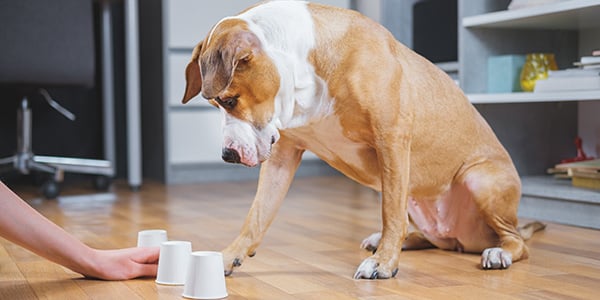 Next, give your dog a choice between the different treats. Put one kind of treat in one hand and a different kind in the other hand, and close your hands to make a fist. (You can also use small cups to cover the treat options on the ground if you prefer, especially if your dog gets mouthy when taking treats.)
Next, give your dog a choice between the different treats. Put one kind of treat in one hand and a different kind in the other hand, and close your hands to make a fist. (You can also use small cups to cover the treat options on the ground if you prefer, especially if your dog gets mouthy when taking treats.)
Allow your dog to sniff both hands, watching to see which they show the most interest in. Give them the one they sniff at, lick at, or paw at the most.
Switch out different treats, rotating in ones you've already tried with different alternatives, to get an idea of what your dog's high-value, medium-value, and low-value treats are.
 Dog Trainer's Top Picks for Training Treats
Dog Trainer's Top Picks for Training Treats
High-Value Dog Training Treats
My go-to high-value treats include small pieces of turkey hotdog, plain chicken, string cheese, and Vital Essentials Minnows, Northwest Naturals Lamb Liver, and Stella & Chewy's Beef Heart treats.
Here's Daisy, one of our office pups, showing how much she loves her high-value minnow treats. Don't worry she's ok and still begging for treats.
Medium-Value Dog Training Treats
My favorite medium-value treats are Zuke's Mini Naturals, Redbarn's Cheese Protein Puffs, and Charlee Bear Liver Crunchy Treats (for those dogs that love to crunch!).
Low-Value Dog Training Treats
I like to use my dog's FirstMate dry food or break up IMK9's Mutt Love Coconuts dry treats as her lower value rewards. My younger dog loves the Wild Eats Sweet Potato treats that I break up into small pieces as training treats.
PRO TIP: Work your dog's brain! Hold back a portion of your dog's regular meals to use as training treats throughout the day, and feed all of their regular meals from interactive toys and puzzles.
The kind of treats you use when training your dog (or just want to give them a special treat) depend on your dog's personal preferences. And remember, it's not always about food! Many dogs find toys, attention, and other real-life rewards incredibly rewarding too. Knowing what your dog likes and what they'll work for will make your training more effective.
Comment below and tell us what your dog's high, mid, and low-value treats are!



